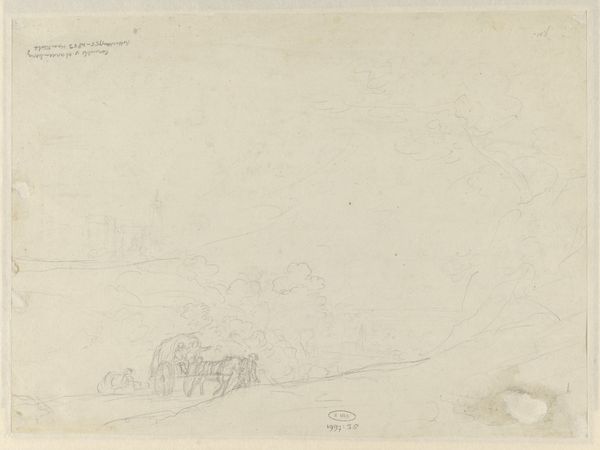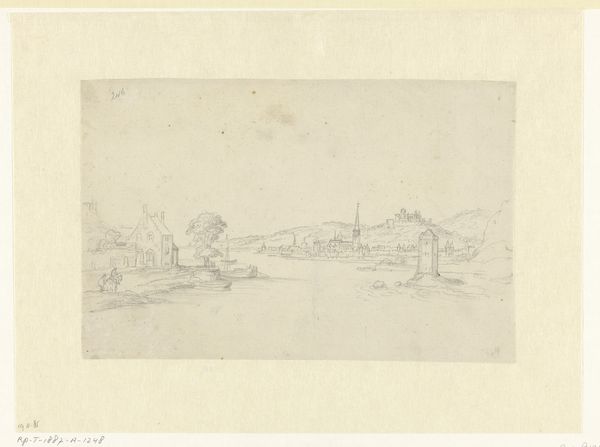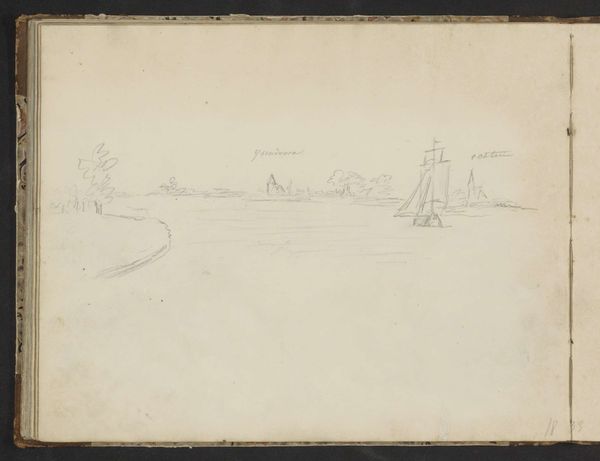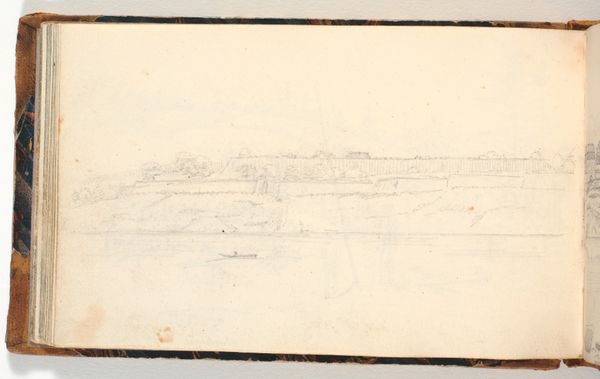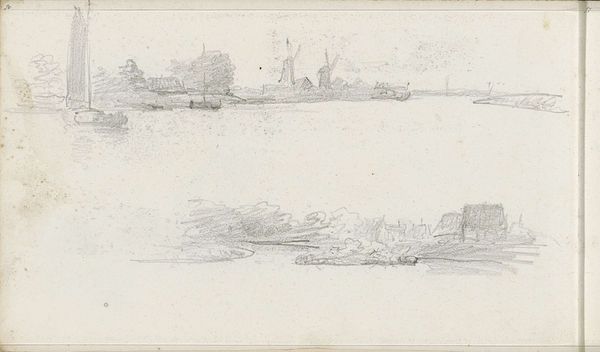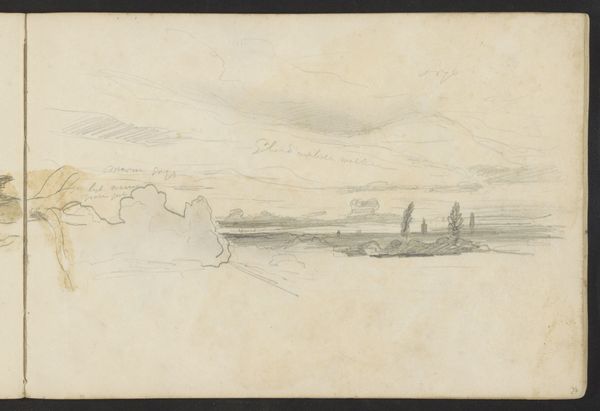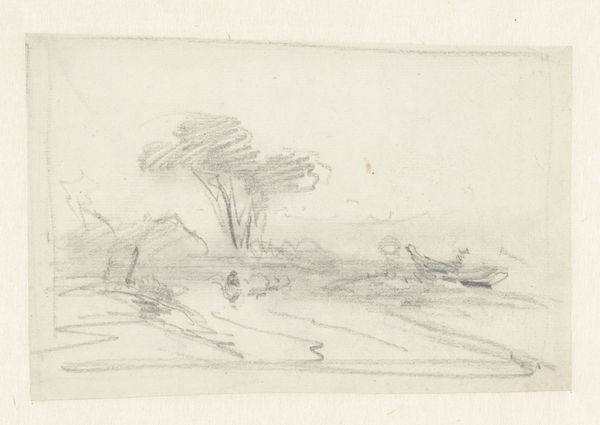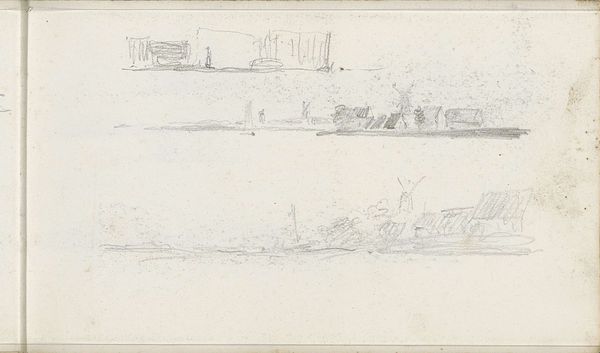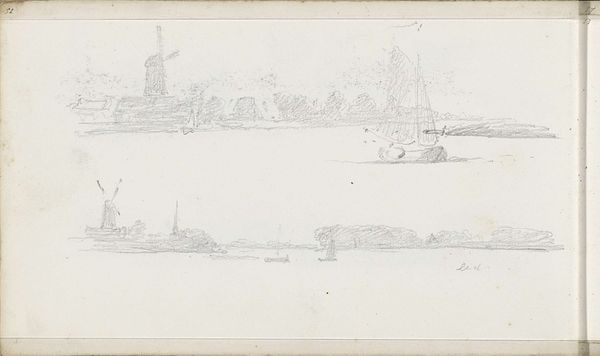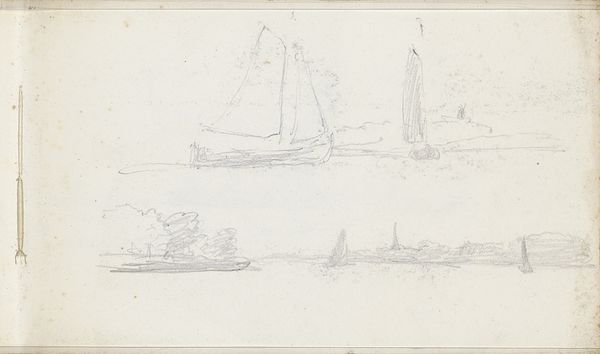
drawing, pencil
#
drawing
#
landscape
#
pencil
#
realism
Copyright: Rijks Museum: Open Domain
Curator: It’s quite ethereal, isn't it? Almost like a faded memory. Editor: Indeed. The drawing you are looking at is titled “Landschappen met water en boten,” or Landscapes with Water and Boats. Petrus Johannes Schotel created it sometime between 1841 and 1865. It's a pencil drawing, currently held in the collection of the Rijksmuseum. Curator: Schotel really captures the stillness, the quiet of a day by the water. Even though it’s just pencil on paper, the suggestion of movement and air is very strong, wouldn’t you agree? The softness of the lines creates an atmosphere, almost dreamlike. Editor: He does capture a sense of place. Schotel, remember, was working during a period when the Netherlands was consolidating its national identity. These types of landscapes spoke to Dutch pride in their waterways and maritime power. These drawings were for sale too; a form of visual consumption linked with civic and patriotic sentiment. Curator: It’s interesting you mention patriotism because maritime imagery in art so often speaks to themes of exploration and the unknown. Do you feel those associations shift with the later, more grounded interpretation? Or do you sense the psychological weight remains in Dutch maritime landscape depictions? Editor: I would suggest that the focus here shifts. These drawings weren't only celebrations of Dutch power, of course, but part of a broader market. Artists were able to use drawings like this to feed an emerging sense of leisure and tourism among middle class families. Art serving the leisure market is just as valid as serving political ideology. Curator: That's a great point. When we connect art so definitively with overt patriotism, it overshadows art’s everyday impact on human perception and emotion. It’s an incredibly realistic depiction in terms of form, but it could mean many different things to different audiences. I think it would even feel contemporary for those viewing it in a modern gallery space. Editor: Exactly. While the political context of these images is obviously an important part of the equation, appreciating their ability to speak across contexts adds an element of nuance that deepens engagement and the ability to be impacted. Curator: Absolutely. It is interesting how one image can trigger different emotional and historical echoes simultaneously. Editor: A dialogue we can happily leave open to interpretation for our visitors, then.
Comments
No comments
Be the first to comment and join the conversation on the ultimate creative platform.
